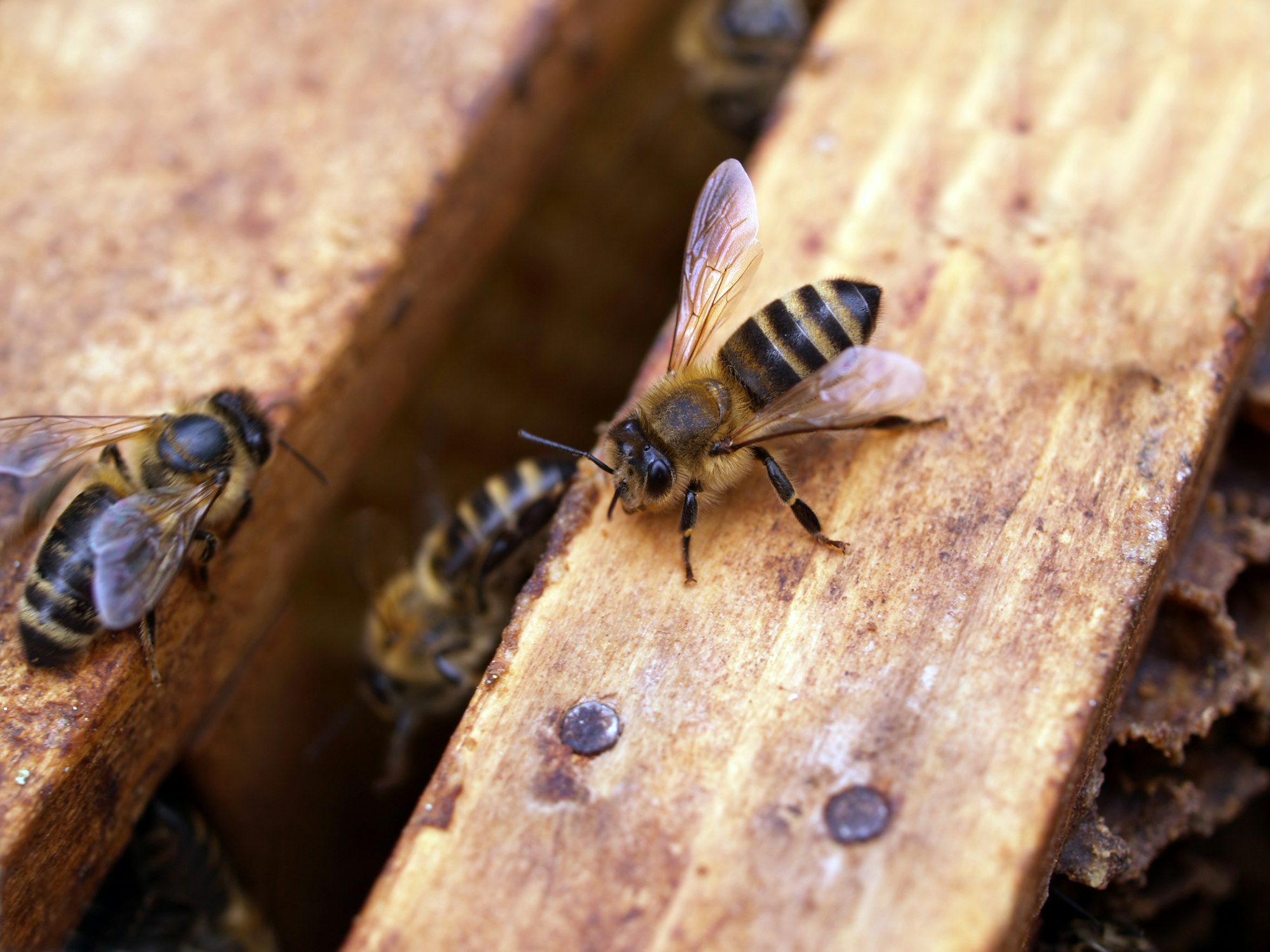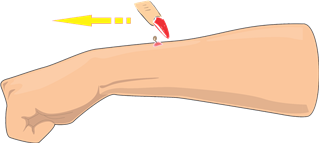Bee Resources
The Antelope Valley Mosquito and Vector Control District no longer offers Bee removal.
For information about local honey bees or removal, check out www.avbeekeepers.com
History of Africanized Honey Bees

In the early 1600's European settlers introduced European Honey Bees (EHB) to North and South America. Those bees were found to be good honey producers in the temperate climates of North America, but did poorly in the tropical and subtropical South. To increase the honey production, the Brazilian government was looking for a more suitable species of honey bees. They found a strain of bees from South Africa to be good honey producers, but they were rather aggressive. In 1956, the scientists in Brazil tried to produce a hybrid that would have the gentle European characteristics and the increased honey production of the African Honey Bees.
Unfortunately the experiment didn't work they way it was supposed to and the hybrid turned out to be a good honey producer, but highly aggressive. About one year later, some bees escaped out of their hives and developed into feral or wild colonies and soon began to spread throughout South America. These feral bees were called Africanized Honey Bees (AHB), since they still showed the aggressiveness and the characteristics of the African bees. Later the media gave them the name of "Killer Bees" to describe their aggressive behavior and since multiple stinging incidences had killed several humans, domestic animals, and livestock.
The first AHB's arrive in the US in October 1990 and were found in Texas. From there they spread throughout the state and then moved on to New Mexico and Arizona. In October 1993 a swarm of AHB's was detected in California, west of Blythe in Riverside County. In 1999 the first swarm of AHB's was found in Palmdale, and now all bees in Southern California are considered Africanized.
Do's and Dont's of Living with Bees:
As a general rule, stay away from ALL honey bee swarms and colonies. All bees in Southern California are now considered Africanized.
| DO: | DON'T: |
|---|---|
| Listen for humming of a bee colony or swarm when outdoors, and avoid areas with unusually high number of bees. There may be a nest nearby. | Provoke ANY bees that you may encounter. |
| Look for bees flying in and out of holes (e.g. tree hole, trash, water meter boxes, etc.) | Throw rocks or squirt water at a bee hive or a swarm. |
| Check area for bee activity before you operate power tools, prune trees or bushes, have a picnic, etc... | Swat at bees, if they attack; rapid movements will aggravate them and cause them to sting. |
| Check area for bee activity before you pen or tie up any animals. |
Homeowners should:
- Periodically inspect their property for potential AHB colonies and remove possible nesting sites around the house and yard
- Seal any opening larger than 1/8 inch, such as pipe entrances to avoid the bees establishing a colony inside the house
- Install screens (1/8") over tops of rain spots, vents, and openings in water meter/utility boxes
If you are being chased by bees, you should:
- Quickly run away being sure to cover your face and neck
- Seek shelter inside a car or a building
If you are stung, you should:

- Quickly go to a safe area
- Remove stingers quickly by scraping them with fingernail, knife blade, or credit card
- Wash sting area with soap and water
- Apply ice pack for a few minutes to help relieve the pain and swelling
- Seek medical attention if breathing is troubled, if stung numerous times or if allergic to bee venom
- In case of a multiple stinging emergency, please CALL 911!
